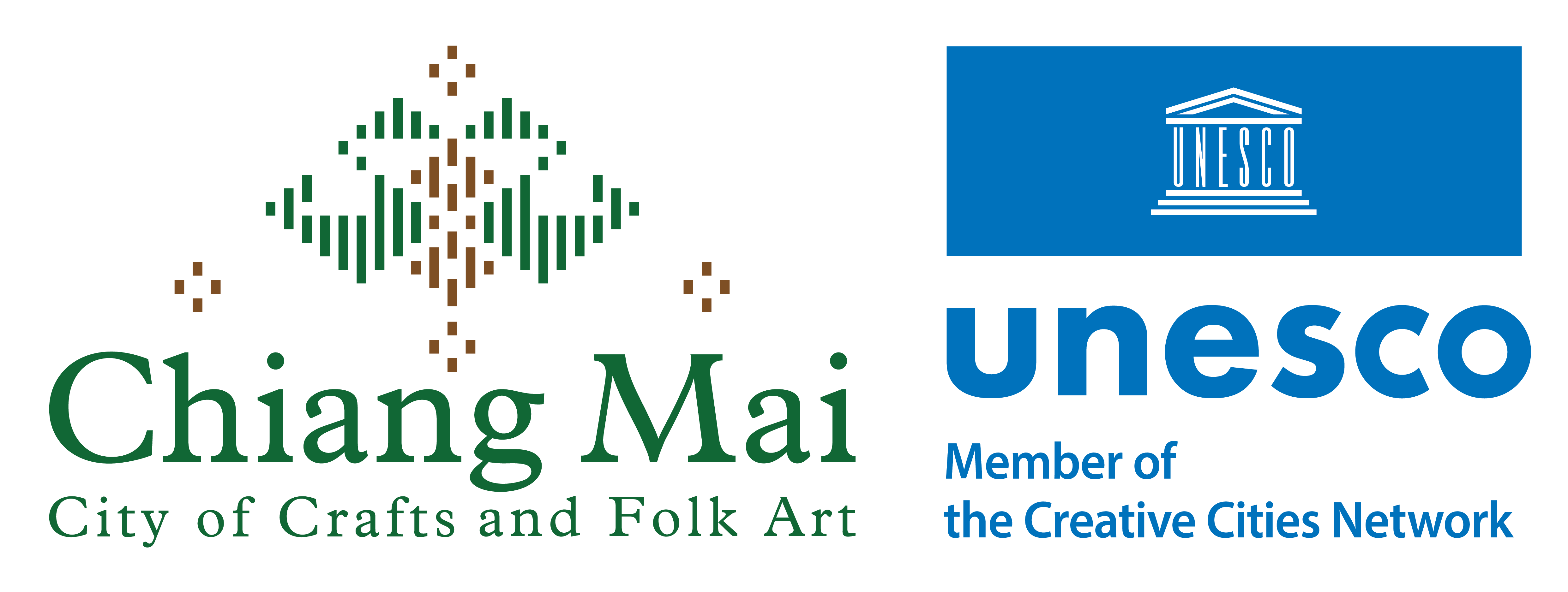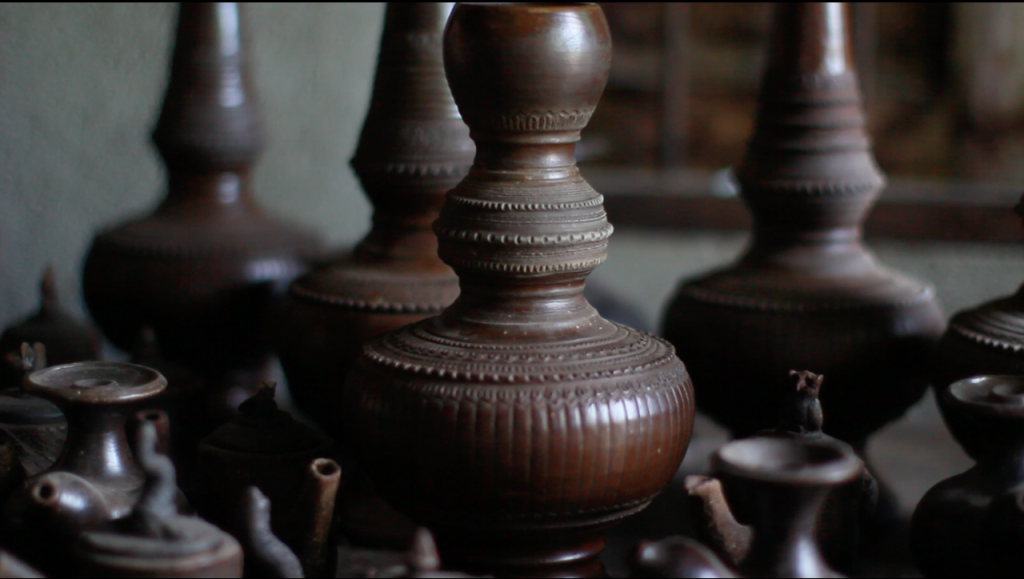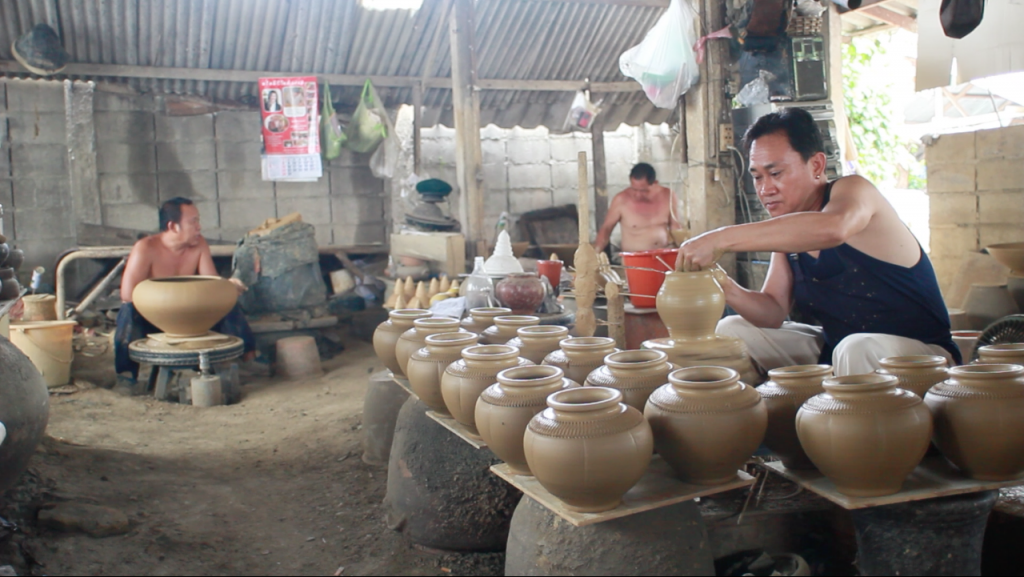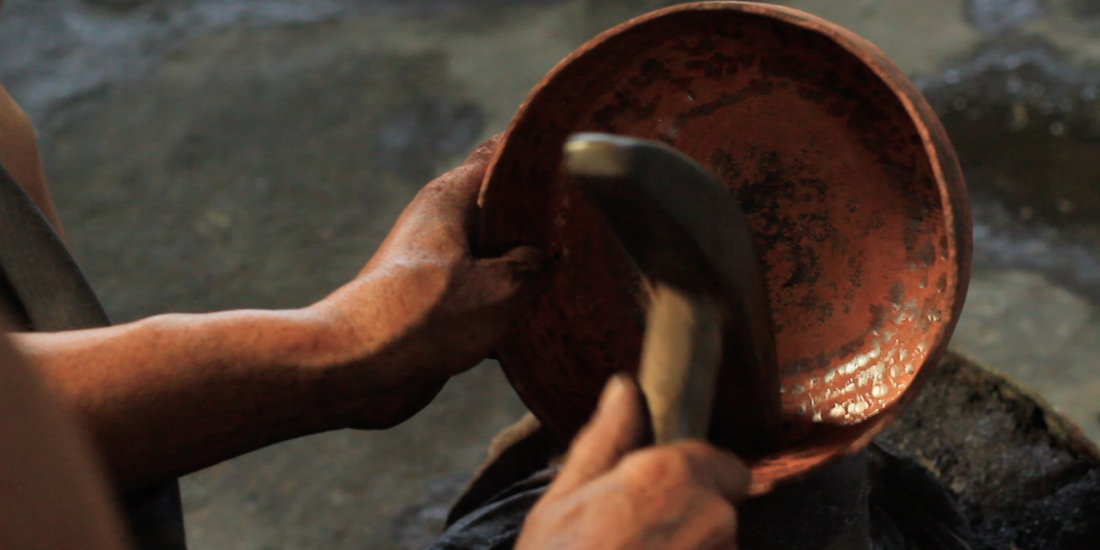Pottery
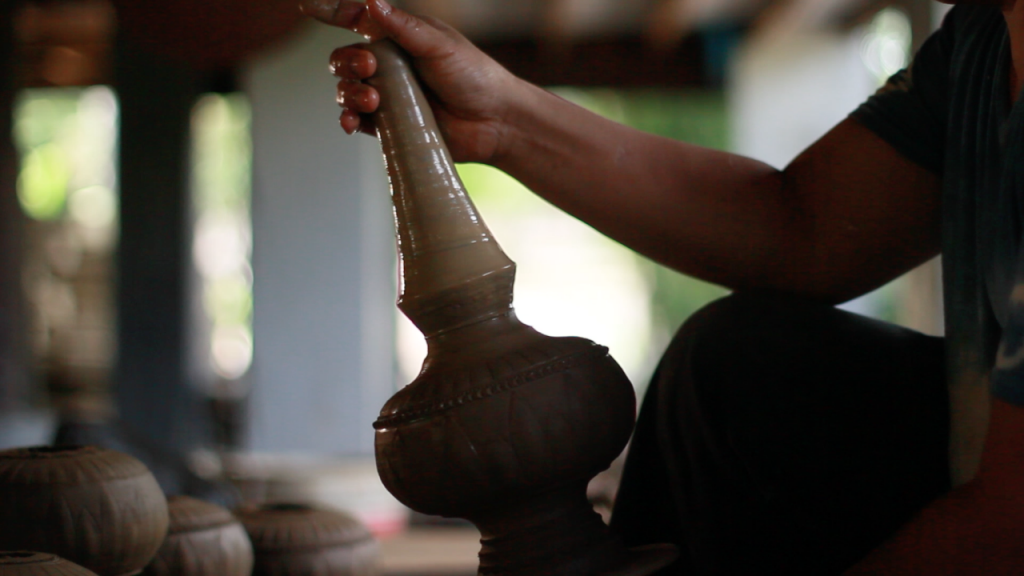
There are evidences that show the existence of pottery in Lanna since the prehistorical era until Hariphunchai Era. However, such pottery products are normal clay ones that were produced for the use within the communities or neighbourhoods. As for the hard pottery products, both enameled and non-enameled ones, they might have been produced since 19th Buddhist Century. It is believed that there were some Chinese experts coming to Thailand to develop pottery technologies. In 20th Buddhist Century, which is the period during which Lanna became prosperous and stable, there were more pottery products to meet internal demands and to be sold in other cities. There are 3 main pottery manufacturing hubs, namely, San Kamphaeng in Ching Mai Province, Wiang Kalong in Lampang Province (including Wang Nuea in Lampang Province), and Mueang Phan in Chiang Rai Province. As for the pottery technique that is applied is the one that has been passed on from generation to generation, it is the hand molding, which is the oldest method to make pottery products before other tools were invented. Sources of Pottery Products in Chiang Mai Province San Kamphaeng Pottery Hub, San Kamphaeng District, is a big ceramic hub of Lanna. There are ruins of pottery stoves spreading in the area of 5.00 – 5.50 sq. km. The 8 stove groups found in the district are Huai Pa Rai, Huai Buak Bin, Doi Ton, Huai Pu Laem, Thung Hong, Ton Haen, Ton Chok, and Lao Noi. Products from these 8 stove groups are in different forms such as bowls, dishes, cups, trays, bottles, vases, narrow mouth jars, wide mouth jars, lamps, clay animal dolls and clay Buddha images. Pottery products from San Kamphaeng have various unique decorative styles such as green ceramics, ceramics with black and brown motifs drawn underneath the enamel, brown ceramics and bi-colour ceramics. Hang Dong Hub has 3 sub-hubs. The first hub is Ban Mueang Kung in Non Khwai Sub-district which produces pots and jugs. Such pottery products have their own unique forms known by the locals as ‘Mo Ngiao’ and ‘Nan Ton Ngiao’. Pottery products from Ban Mueang Kung are local art works from local skills and craftsmanship, and are produced for being used in daily life or for responding to traditional and cultural activities. The original forms of potter products manufactured for the aforementioned purposes include Nam Ton and Nam Mo, which are drinking water containers and cooking pots, and construction material such as bricks.. The products that the craftsmen of Mueang Kung Community have expertise in are Nam Ton and Nam Mo which have been developed to have beautiful forms until they become symbols of Ban Mueang Kung. The second hub is Ban Pa Tan, San Phak Wan Sub-district, has unique pottery works that are different from those from Mueang Kung because the pottery products are made in the shapes of cartoon characters and animals, as decorative items and plant pots. In this village, there are around 20 households that produce pottery products. Like those from other communities and groups, products from this village are distributed through product sales centers, other villages that have community enterprises, Bangkok (Chatuchak Market), and hotels and guesthouses in other provinces. The other hub is Ban Kuan Village, Han Kaeo Sub-district. Pottery products from this village are different from those of Mueag Kung because the products from Ban Kuan Village are molded with ‘circulating’ technique in the forms of pots and cooking pots of different kinds. There is also a pottery group of Ban Mai Pa Chi Village in Nam Phrae Sub-district, which is a group of community members who produce pottery products. Like the group of Pa Tan Village, the village produces products in the forms of cartoon characters, but in bigger sizes. Pottery Group in Mae Rim District is a source of pottery products that is in the ‘Hong Krathang’ (source of pottery form.) This group makes pottery products in the forms of gods, dolls, girls in Thai dress, but the most recognized products are plant pots. Pottery Groups in Saraphi District are in Nam Lom Village, Khua Mung Sub-district, Saraphi District. There are 3 groups that manufacture local stoves for selling to dealers who order the stoves to sell to end-customers. End-customers also directly buy stoves from the groups.
